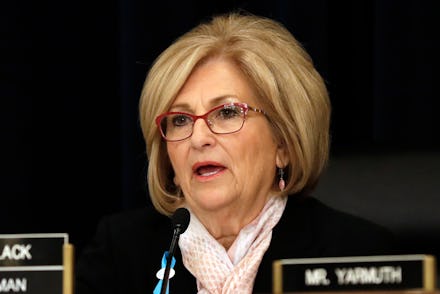3 key things to know about the new Republican budget plan

On Tuesday, in the wake of reports that the Senate GOP health care bill is officially dead, House Republicans released their plan to dramatically overhaul the federal budget. The plan makes deep cuts to crucial programs, while dramatically increasing defense spending and rolling back certain financial regulations.
Here are three important things to know about what the new budget aims to do:
It slashes crucial entitlement programs.
Throughout the 2016 campaign, Donald Trump ran in both the primary and the general election on a platform of not cutting entitlement programs. Now Republicans want him to pass some of the deepest cuts to entitlements in recent history.
Their new budget would cut half a trillion dollars from Medicare and another $1.5 trillion from Medicaid and the Affordable Care Act. It would end the Medicare program as we know it by moving to a voucher-style system, where individuals would receive a fixed amount to shop for health care on the open market.
Republicans claim that drastic cuts are necessary for programs like Medicare because current estimates show the program will be insolvent by the year 2029. In reality, the solvency of the program has been projected to be somewhere between eight and 19 years out for more than a decade. Several factors, from a slower rate of growth in health care spending, to reforms that came about as part of the Affordable Care Act, have actually made it so that the program’s projected lifespan has increased in recent years.
It increases defense spending above what is currently permitted by law.
During the Obama administration, Republicans and Democrats tried to force themselves to compromise on a budget using a Sword-of-Damocles negotiating tactic called “sequestration.” The idea was that, if the two parties couldn’t come to an agreement, then automatic, across-the-board cuts would be made to both discretionary and defense spending.
The plan backfired, as Republicans and Democrats failed to reach a compromise and the Draconian cuts went into effect.
Now, the new Republican budget aims to dramatically increase defense spending. Under that Obama-era law, defense spending is still capped at a level below where Republicans want it to be. They want to use a special budget process to get around Democratic attempts to stop the bill. But it’s not clear that they can actually do that if they are set on raising defense spending above sequestration levels.
It’s based on wildly optimistic budget projections.
The budget outline released by Republicans claims that it will achieve a budget surplus over the next decade. But part of its path to getting there is erasing $1.5 trillion worth of debt through economic growth at a rate of 2.6% of GDP.
While that’s less that the Trump administration’s even more optimistic projection of 3% GDP growth, it’s still well above what the non-partisan Congressional Budget Office thinks is possible.
If the Republican budget were to pass and the economy actually grows at the 1.9% of GDP projected by the CBO, it would leave a much bigger hole in the budget than their outline admits.